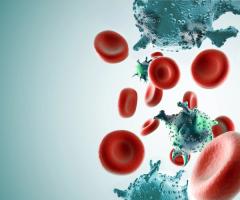
Acute Myeloid Leukemia: Patient Presentation and Evaluating Response
Ghayas C. Issa, MD, describes the typical presentation of patients with acute myeloid leukemia and provides clinical insights on evaluating response and potential disease progression.
Episodes in this series

This is a video synopsis/summary of an OncView® featuring Ghayas C. Issa, MD.
Ghayas C. Issa, MD, from MD Anderson Cancer Center, discusses exploring genetic targeted therapies for relapsed or refractory acute myeloid leukemia (AML). AML patients typically have very high white blood cell (WBC) counts and present to the hospital with evidence of bleeding due to low blood cell counts; sometimes they have very low WBC count. More often patients present to the clinic where AML diagnosis is made by bone marrow biopsy identifying AML.
AML prognosis varies; some disease has a lower recurrence risk, and some has a higher recurrence risk. Treatment response in AML is defined by disappearance of leukemia on bone marrow biopsy (morphologic remission). The pathologist estimates blasts and if it’s less than 5% (an arbitrary cutoff), it's considered to be in remission; but usually more testing is done, like flow cytometry and mutation testing. Complete remission (CR) means blasts under 5% in marrow, with recovered normal cells. Other response categories are CR with incomplete blood count recovery, and detecting measurable residual disease.
Relapse is often first evident on blood tests that show dropping blood cell counts or circulating leukemia cells, then confirmed on marrow biopsy showing increased blast percentage.
Video synopsis is AI-generated and reviewed by Cancer Network® editorial staff.
Newsletter
Stay up to date on recent advances in the multidisciplinary approach to cancer.



















































































